Mexico’s history can be read in many ways, but to us, it’s most legible through food—specifically, by eating the best street food in Mexico City.
As the capital, Mexico City is the country’s largest and most diverse in everything from the people to the culture to the food. But it’s the city’s culinary diversity that excites us.
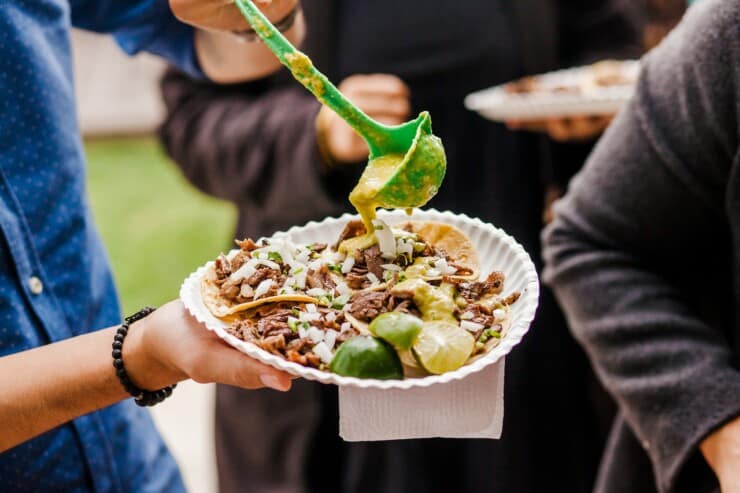
We’re talking about variety in cuisine, the regionality of the Mexican food you find, and the style of food, which can have everything from street vendors to world-class fine dining on the same block.
As a travel expert who has lived in Mexico City for five years and has worked extensively with clients planning their trips to Mexico, I’ve spent countless hours tasting my way through the city’s incredible street food scene.
When it comes to street food Mexico City, there’s no shortage of bold flavors, rich traditions, and hidden gems. And the traditional Mexican street food that tops our list includes the torta de chilaquil, tlacoyos, and tacos al pastor.
13 Of The Best Street Food Mexico City
We love traveling around Mexico to eat good food, but Mexico City has a unique quality. Eating your way through the city gives you a cross-section of Mexican cuisine because there is food from every corner of the country. But don’t take our word for it: Mexico City’s street food scene is so celebrated that it is recognized as a UNESCO Intangible Cultural Heritage.
When we arrange services for our Mexico travel clients, the most common question is, what is the best street food in Mexico City? We don’t like to play favorites, but you can go wrong starting with the classics. So here is a list that covers the Mexico City street food essentials:
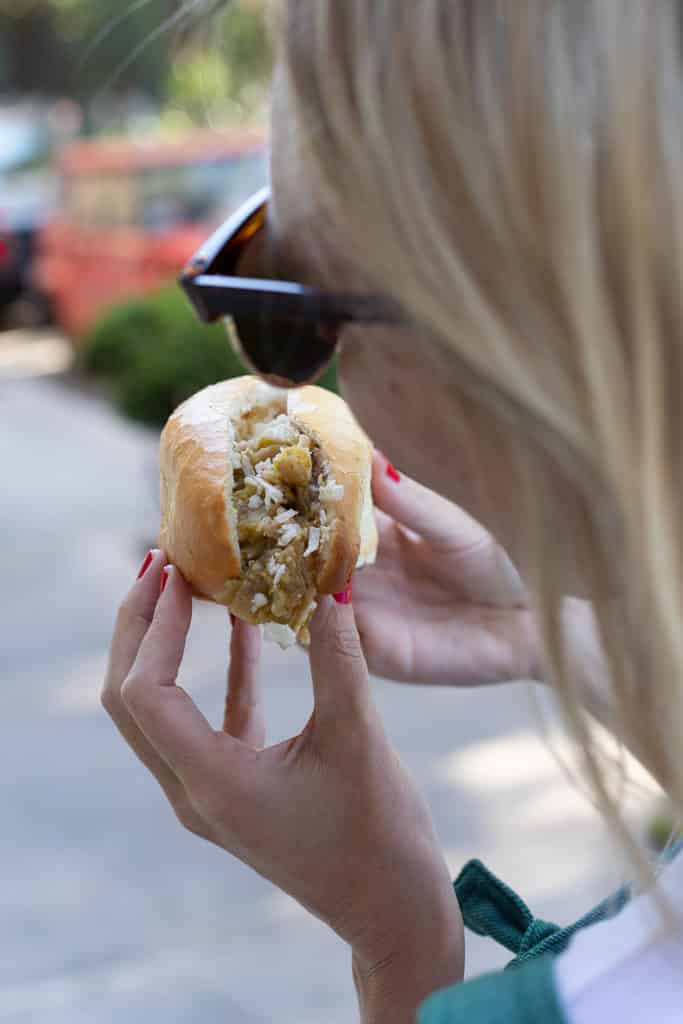
Breakfast
As we’ve said before, Mexican breakfast foods top our best street food Mexico City bucket list, so we’re all about having that first meal of the day.
Pan Dulce
Start your day with a pastry and coffee for breakfast like a local. The most common breakfast pastries are sweet pastries known as pan dulces. There are various types and shapes, and they have some pretty cute names, like conchas (shells), bigotes (mustaches), orejas (ears), and besos (kisses).
If you’re in downtown Mexico City, you’ll see many street food stands selling pastries, but we recommend heading to Pastelería Ideal for floors and floors of Mexican pastries.
Tamal Y Atole
For a super classic breakfast, get a tamal and some atole. This is of particular note among traditional Mexican dishes as it’s believed that the masa-based drink atole dates back to pre-Hispanic times.
Walking around Mexico City in the morning (especially in the markets), you’ll see many vendors selling tamales and atole. It is a perfect way to fuel up for a day of exploring the legendary Mercado la Merced market. Just a heads up that it’s a hefty dose of carbs, so you may get full before you can finish it!
Chilaquiles
If you like salsa and tortilla chips, you’ve probably had chilaquiles — a classic Mexican breakfast dish of totopos (fried corn tortillas) tossed with salsa and sometimes topped with radishes, a fried egg, or chicken. Across Mexico, you’ll see all sorts of chilaquiles on restaurant menus, but the torta de chilaquil is unique to Mexico City.
As in a French roll stuffed with chilaquiles (pictured above) and topped with all the fixings, it’s as awesome as it sounds! A great place to get this treat is at La Esquina del Chilaquil, but be forewarned that it always has a line (and for a good reason because it’s a super popular food)!
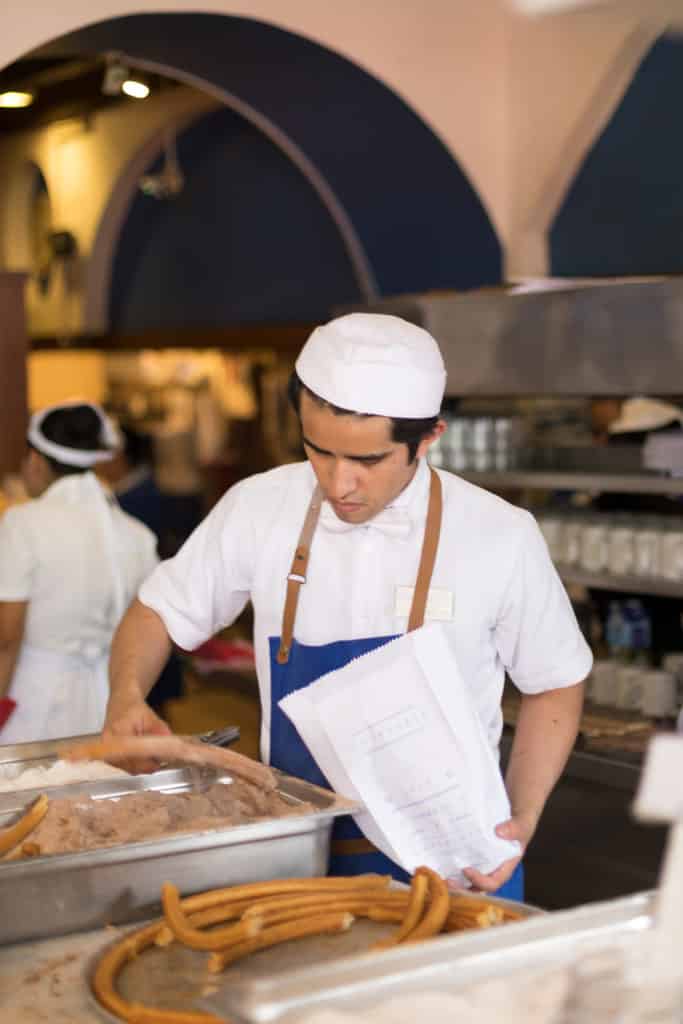
Snacks
Even if you’re not a snacker in your normal day-to-day, make an exception when you travel to Mexico City because there are delicious, sweet, and savory snacks you’ll come across. On the list of best street food Mexico City, these snacks make the cut:
Churros
Yes, churros originated in Spain, but you can find the sweet, cylindrical pastry throughout Mexico. The fried dough is tossed in sugar or cinnamon sugar and then served with sauces ranging from chocolate to dulce de leche. The best churros are fried to order, so steer clear of spots that serve room-temperature churros!
Elotes and Esquites
If you live in an area with great Mexican food or have seen Nacho Libre, you’re likely familiar with the garnished corncobs known as elotes.
Well, esquites as their off-the-cob sibling. Kernels are removed, boiled, or roasted with epazote (a local herb), then served with salt, lime juice, mayonnaise, chile powder, or con todo (the works). Our advice: always get it con todo!
Insects
Insects have a role in Mexican cooking that goes back to pre-Hispanic times. While they’re most common in more traditional dishes and as a street snack, modern restaurants also add a variety of insects to dishes as a garnish. Our favorite types are escamoles, chicatanas, and chapulines.
- Escamoles are ant larvae harvested from maguey plants. They have been a delicacy in Mexico City since the Aztecs’ age.
- Chicatanas are giant flying ants harvested in the southern part of the country immediately following rains. They’re often ground up into dust and used to rim cocktail glasses or served whole in some dishes.
- Chapulines are grasshoppers that are usually toasted and salted. They can be found in everything from nut mixes sold on the streets to quesadillas in mezcalerias.
Pambazo
Mexico City’s variation on traditional Mexican tortas (sandwiches) is the pambazo. Whereas a bolillo (like a French bread roll) is standard across the country, the pambazo is made with the bread of the same name.
The bun is soaked in a medium spicy guajillo chili sauce that adds a fiery kick to every mouthful, and then it’s fried until crisp and finally filled. The filling is just as impressive—chorizo, potatoes, lettuce or cabbage, crema or sour cream, and queso fresco combine to make a seriously filling sandwich.
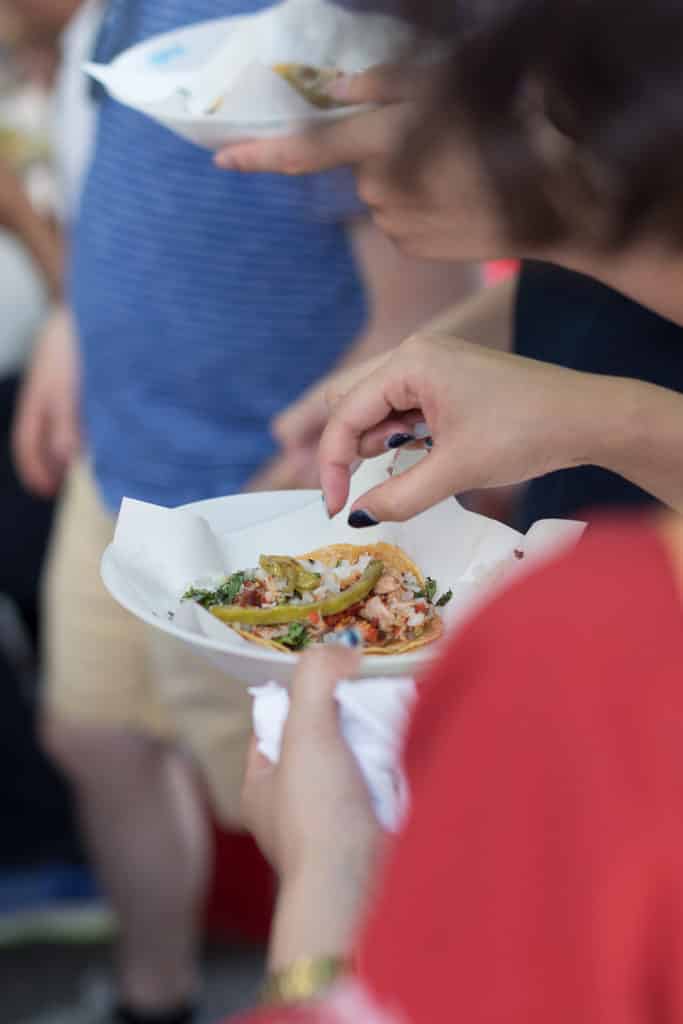
Antojitos
The category of antojitos–various snacks made with masa or corn dough–is one of the largest in Mexican cuisine. But when it comes to the best street food in Mexico City, a few stand out like huaraches.
Huaraches
A spinoff of tlacoyos (see below), huaraches originated in Mexico City almost 100 years ago thanks to Señora Carmen Gómez Medina. She was making tlacoyos but then personalizing it to make it a longer, more oblong shape, which people nicknamed huarache (or sandal because it’s said to resemble a shoe). The most significant change beyond the shape was that the huarache was made with refried beans stuffed in the middle.
Quesadillas
We know you’re thinking, I know what a quesadilla is — I’ve had 1,000 at the Mexican restaurant in my hometown. When you order a quesadilla anywhere else in Mexico, it will be the kind you’ve had countless times stateside.
But that is not the food we are talking about here. At the street food stalls in Mexico City, a quesadilla is any taco cooked on the flat-top griddle, and many don’t even have cheese! So be sure to specify that you want the queso in your quesadilla; otherwise, you’ll likely be cheese-free and likely disappointed.
Tacos Al Pastor
If you’re after delicious tacos, Mexico City is one of our favorite places on earth for them. While you can find almost every type of taco, from carne asada to birria tacos, we believe some of the best tacos al pastor are found there.
Translating to “like the shepherd,” the term “al pastor” references the Lebanese immigrants who arrived in Mexico in the early 20th century. They brought shawarma with them, and it evolved into tacos árabes (a dish in Puebla where spit-roasted, seasoned lamb is served on a pita) and even further into al pastor.
These classic street tacos are made by marinating meat (historically lamb but often pork now) with Mexican-meets-Middle Eastern flavors like charred onions, garlic, achiote paste, cumin, cinnamon, allspice, and cloves. After the pork butt is marinated overnight, it’s layered onto a trompo (vertical spit) with a pineapple on top and slowly cooked for hours until the meat is tender, flame-licked, and caramelized.
How do you know where to go for the best pastor tacos? First, a legit al-pastor joint only does al pastor and does it excellently. Also, most locals say that the larger the trompo, the better the spot (the rationale is that the amount of meat they cook is an indicator of demand at a given taco stand).
One of the widely considered best places to get these in the Mexican capital is El Vilsito, which was featured in the Netflix Taco Chronicles documentary. Oh, and know that al pastor is primarily a nighttime taco since the trompo turns and cooks for hours before it’s ready (also because it’s a phenomenal cap to a night out on the town)!
Tacos De Canasta
An ingenious batch-cooking idea that originated in Mexico City is tacos de canasta. Translating to “basket tacos,” these Mexican tacos are arranged and piled into a basket for taqueros to sell on the go. The basket is covered with cloth and plastic, keeping the tacos warm and moist. These tacos have various fillings, including beans, potatoes, and chicharron (pork skin).
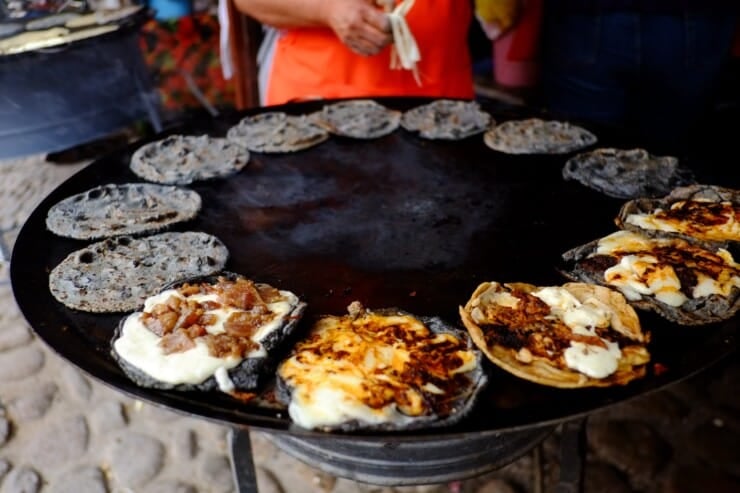
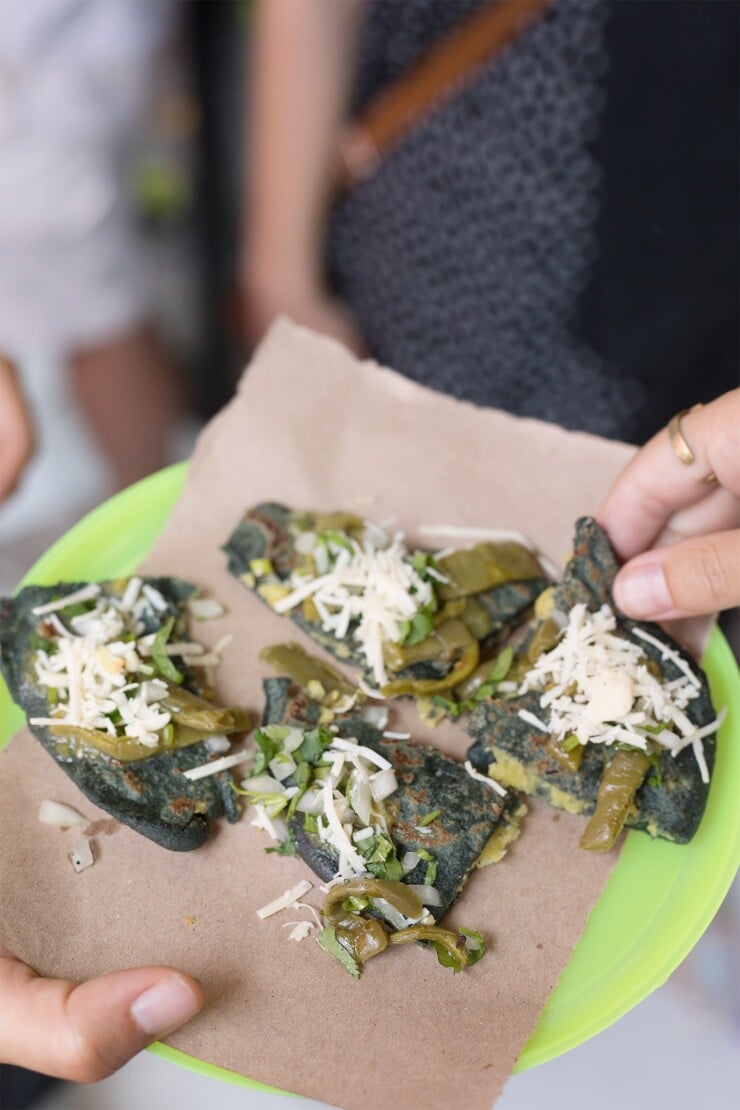
Tlacoyos
One of our all-time favorite things to eat on the streets of Mexico City is tlacoyos. These almond-shaped discs of blue corn masa are stuffed and then cooked on a comal, a large, open-air griddle.
It is said to have been created by the original Nahuatl-speaking inhabitants of Toluca. This town lies about 40 miles west of Mexico City; the snack has barely changed since Aztec times — and it’s so delicious it’s not hard to understand why.
The most common fillings are chicharron, requesón (a fresh Mexican cheese like ricotta), or haba (mashed fava beans). The hot, crispy cakes are then topped with either nopales (grilled strips of cactus paddles) or quelites (cooked wild spinach), topped with grated cheese, and drizzled with either hot red salsa or mild green salsa.
Frequently Asked Questions
Some must-try street foods in Mexico City include Tacos al Pastor, Tamales, Elotes (corn on the cob), Quesadillas, and Churros. Each of these dishes offers a unique taste of the city's vibrant street food culture.
Mexico City's street food is unique for its diversity, rich flavors, and the way it reflects the city's cultural heritage. From savory tacos to sweet churros, the street food scene offers an array of options that cater to all tastes.
Street food in Mexico City is generally safe to eat, but it's always advisable to eat at busy stalls with high turnover, ensuring the food is fresh. Look for places that are popular with locals and maintain good hygiene practices.

Drinks
Mezcal
If we’re going to talk mezcal, let’s get one thing straight: any spirit distilled from the agave plant is considered a mezcal. In other words, the term mezcal is the mother term under which other spirits like tequila, bacanora, sotol, and raicilla reside. Because the agave plants are cooked underground to create mescal, the spirit has a smoky flavor.
The spirit can be made from various agave plants – some cultivated and some wild – but its sudden popularity has created a sustainability issue as many people have pulled up wild plants. We suggest trying a few wild varieties once to know what they’re like, but order the cultivated strains – espadín being the most common – to help keep the spirit sustainable!
Pulque
Before mezcal or tequila, there was pulque – the alcoholic agave beverage. Murals dating back to 200 AD in Cholula, Mexico, show villagers drinking pulque. Made from the sap of the heart of the agave, this is not distilled (like mezcal or tequila) but fermented, so it’s low in alcohol and bubbly, almost like kombucha or beer.
Pulque has recently enjoyed a comeback, as local hipsters have turned to it as an alternative to beer. The most famous place to drink pulque in the Ciudad de México is Pulqueria Las Duelistas.
How about you? What are your favorite foods to eat when you visit Mexico City? Let us know in the comments below!
Get A Personalized Travel Itinerary
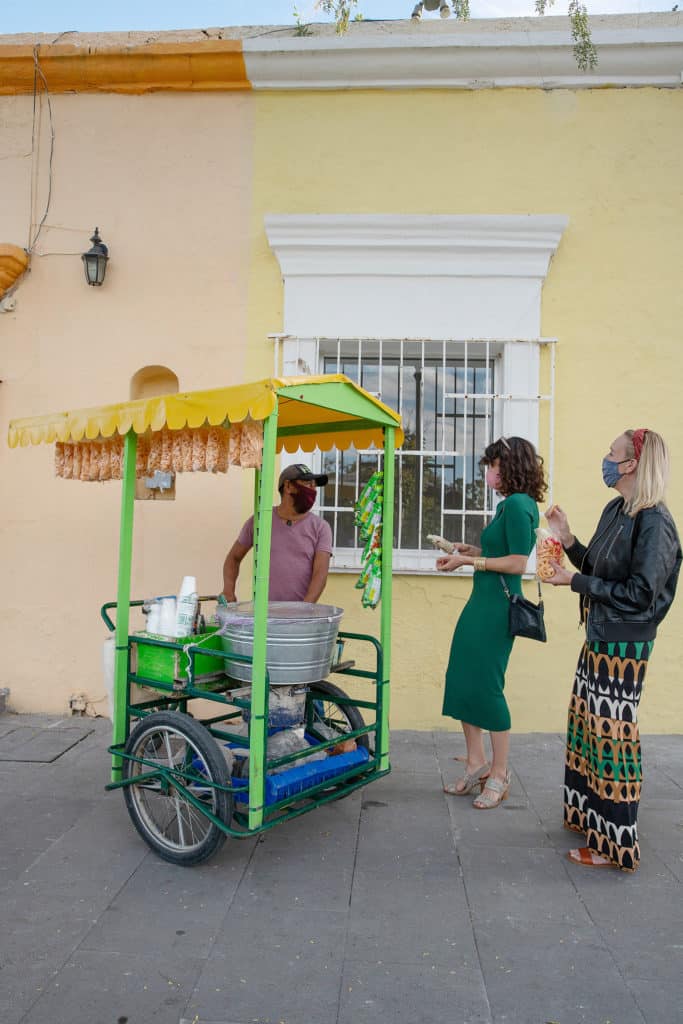
Where To Eat Street Food In Mexico City
You can find street food vendors across the whole city, but the highest concentration of vendors is in the historic city center or the Centro Histórico downtown. There is a bit of culture to ordering street food (when in doubt about garnishes for the food, “con todo” or ask someone else in line), and some foods are more commonly made in the daytime while others are more common at night.
If you need help navigating it all, don’t hesitate to get in touch. We can provide recommendations or even set you up with a local guide so that you can make sure to try the best things on the streets of Mexico City.

Polanco vs Condesa And Other Mexico City Neighborhood Tips
Now that you are versed in the best street food in Mexico City, you’re likely planning out the rest of your trip. From where to eat to where to stay, we’re here to help you. One of the biggest questions we get is which neighborhood to stay in when visiting.
We love the history and bustle of the historic center, but other clients like the mix of taco stands and modern boutiques in Roma, and others still like the parks and the best restaurants in Mexico City for fine dining that you find in Polanco. Read on for the six Neighborhoods To Visit To Get To Know Mexico City.

Classic Mexican Recipes
Want to cook up some of Mexico at home? Here are five of our readers’ favorite Mexican recipes:
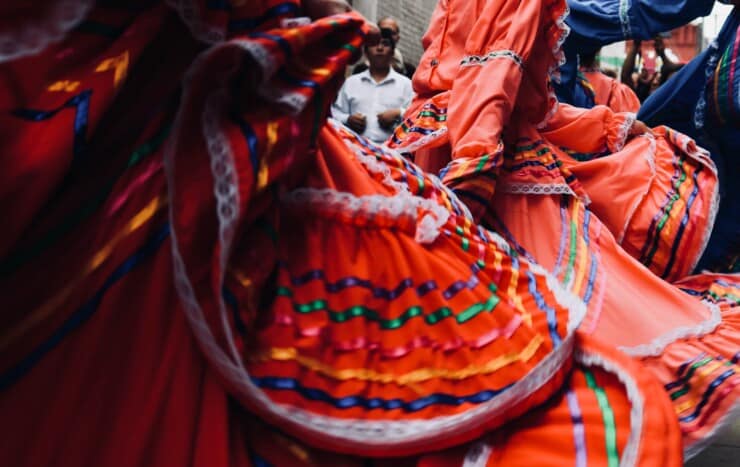
Mexico Travel Guide
Are you heading to Mexico soon? Check out our Mexico travel guide, where we share travel tips, where to stay, what to pack, and more across the country.
Have Us Plan Your Mexico Trip
Thinking of traveling to Mexico soon? Our travel planning services are here to help you have the ideal vacation. After discussing your preferences during a short consultation, we’ll plan your perfect itinerary. Whether you’re looking for custom travel planning, to join one of our small group trips, or need help with reservations, the Salt & Wind team is here to help. Contact us today to learn more!